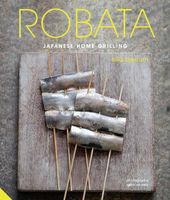Advertisement
Why Binchotan?
Appears in
Published 2018
Japan has been producing charcoal for almost 5,000 years as a smoke- and flame-free source of heat for houses. The country has large land areas covered in forest, so taking down trees and producing charcoal has been an important part of maintaining forestry through millennia. Binchotan (bincho) charcoals, sometimes referred to as white charcoal due to the white residue found on its surface, is a style of charcoal made from a heavy, dense species of oak tree, such as the 20-30-year-old ubame oak tree from Minabe in the Wakayama Prefecture, where some of the finest bincho is produced. Bincho coals were first adopted by the aristocracy as a smoke-free fuel to heat their palaces, before being adapted for cooking purposes and popularized by the new portable cooking tool, the hibachi, a rectangular or round box with inner walls covered in an inflammable ceramic material, which took cooking on charcoal from a luxury to an everyday custom.

